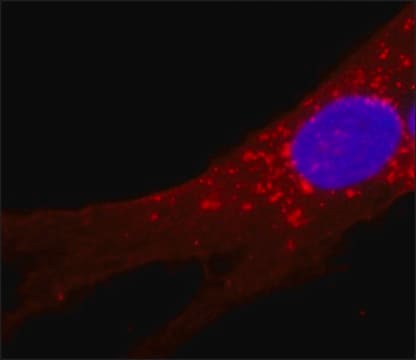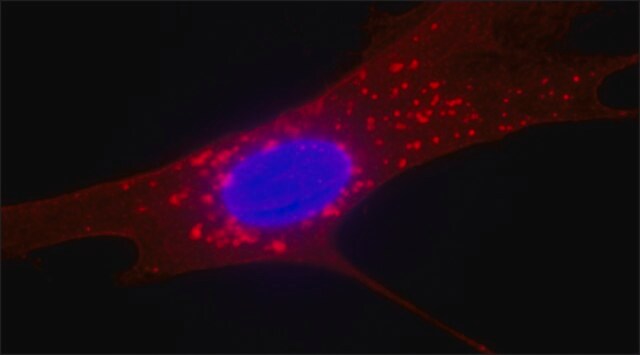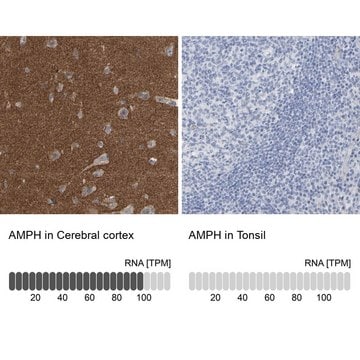F4772
Monoclonal Anti-Cytokeratin Peptide 18−FITC antibody produced in mouse
clone CY-90, purified immunoglobulin, buffered aqueous solution
Sinónimos:
Monoclonal Anti-Cytokeratin Peptide 18
About This Item
Productos recomendados
origen biológico
mouse
conjugado
FITC conjugate
forma del anticuerpo
purified immunoglobulin
tipo de anticuerpo
primary antibodies
clon
CY-90, monoclonal
formulario
buffered aqueous solution
reactividad de especies
wide range
técnicas
direct immunofluorescence: 1:100 using formalin-fixed, paraffin-embedded sections of human or animal tissues
immunohistochemistry (formalin-fixed, paraffin-embedded sections): suitable
isotipo
IgG1
Condiciones de envío
dry ice
temp. de almacenamiento
−20°C
modificación del objetivo postraduccional
unmodified
Información sobre el gen
human ... KRT18(3875) , KRT18(3875)
¿Está buscando productos similares? Visita Guía de comparación de productos
Categorías relacionadas
Descripción general
Inmunógeno
Aplicación
- direct immunofluorescent staining
- immunohistochemistry
- double immunofluorescence
- immunocytochemical and immuno?electron microscopic localization of keratins
- is suitable for immunohistochemistry to identify renal tubular epithelial cells in the extrarenal cells regeneration during acute renal failure
- is suitable for immunocytochemical and immuno-electron microscopic localisation of keratins in human materno-foetal interaction zone
- may be used for single or double labeling procedures
Acciones bioquímicas o fisiológicas
Forma física
Cláusula de descargo de responsabilidad
¿No encuentra el producto adecuado?
Pruebe nuestro Herramienta de selección de productos.
Código de clase de almacenamiento
10 - Combustible liquids
Punto de inflamabilidad (°F)
Not applicable
Punto de inflamabilidad (°C)
Not applicable
Certificados de análisis (COA)
Busque Certificados de análisis (COA) introduciendo el número de lote del producto. Los números de lote se encuentran en la etiqueta del producto después de las palabras «Lot» o «Batch»
¿Ya tiene este producto?
Encuentre la documentación para los productos que ha comprado recientemente en la Biblioteca de documentos.
Nuestro equipo de científicos tiene experiencia en todas las áreas de investigación: Ciencias de la vida, Ciencia de los materiales, Síntesis química, Cromatografía, Analítica y muchas otras.
Póngase en contacto con el Servicio técnico








